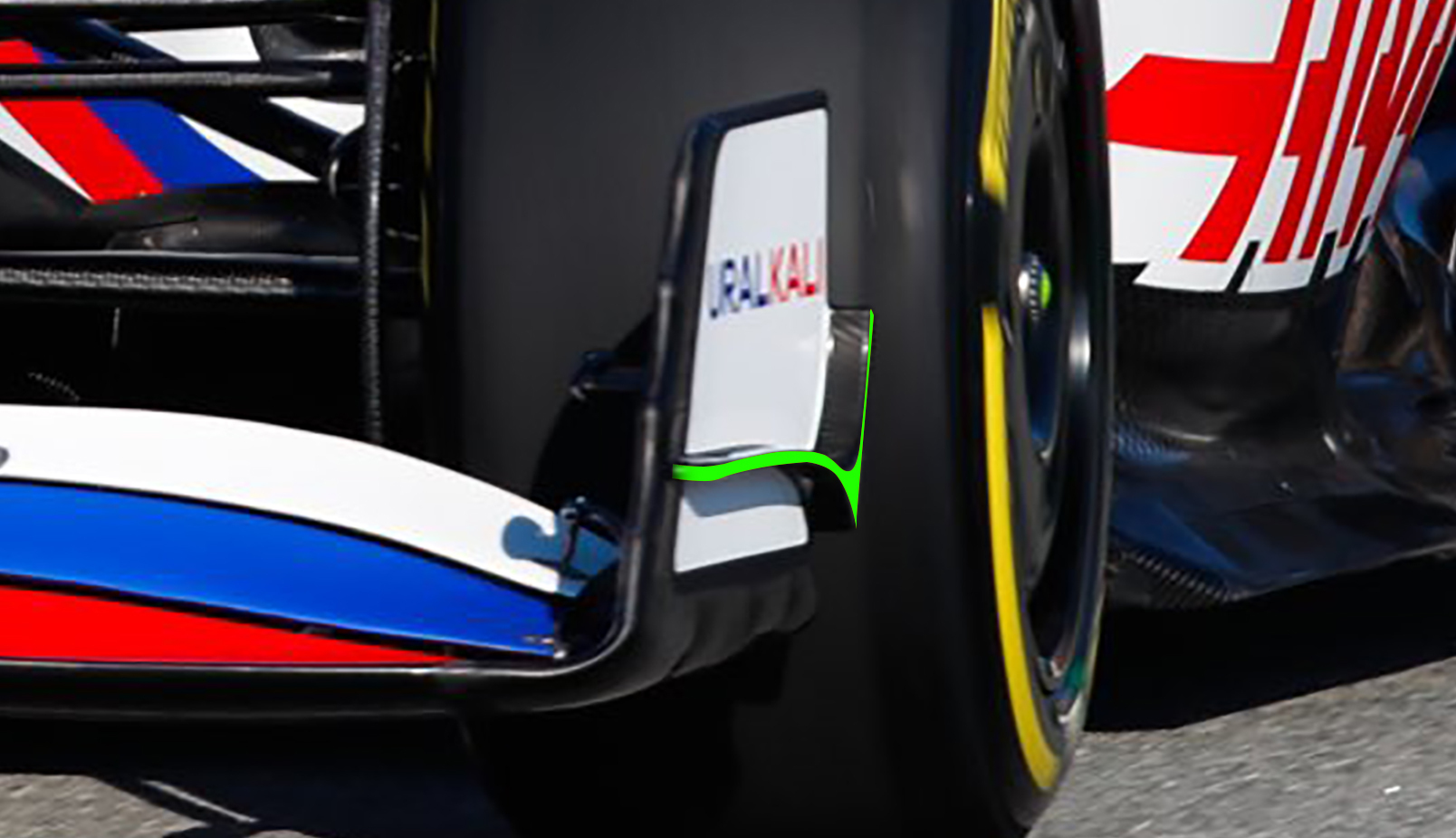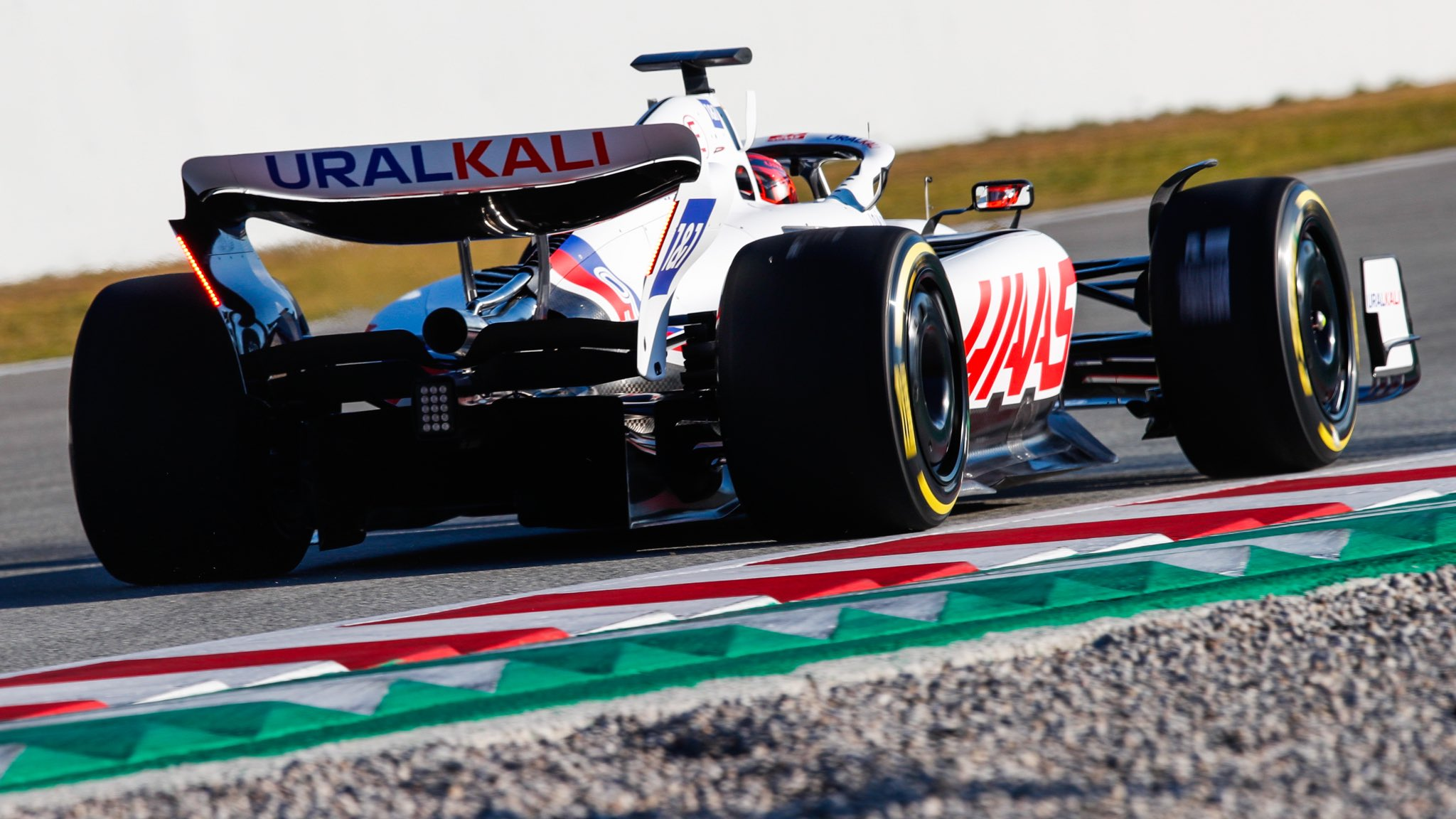Up Next

The Haas VF-22, which we previously only saw in renders used for the launch, has hit the track in Barcelona. Despite there being few detailed pictures so far, it’s interesting to see that although it’s from the same family, it’s far from a twin of the Ferrari.
We shouldn’t expect anything else. Haas has said it will use as many parts from Ferrari as is legally acceptable within the regulations, which includes the power unit, the PU cooling package, gearbox, hydraulics, front and rear suspension, the steering assembly and probably the wiring. A complete rundown of the transferrable components can be found here.
Teams are required to design and produce their own aerodynamic surfaces and there are some small deviations from the approach that Ferrari has taken.
It looks like there could be a slot gap between the front wing forward element and the second element. However, the inner-loaded section of the front wing is similar to Ferrari, although Haas has a longer adjustable flap section in this area to give it more room for balance adjustment.
The front wing end plates are interesting. They have some small nicks on the leading edge, which could induce individual vortices that would go around the outside of the front tyre.

Even more attention-grabbing is the turning vane on the outside of the endplates (highlighted in green above). On the other cars, we christened this a ski ramp because that’s what it looked like.
But on the Haas, it is more of a horizontal Y-shape with the base of the Y being the leading leg. This again will probably produce stronger vortices going around the outside of the front tyre.
The front suspension and steering structural components will probably be identical, which means that the layout will be the same. It’s a twin wishbone with pushrod-operated internals. However, under the 2022 regulations, each team has to wrap them in their own design of shroud, so in this area, I’m sure there will be subtle differences in the aero profiles.
The sidepod inlets are similar, if a little narrower and deeper, but not really anything like some of the square inlets we have seen on other cars.
Like the Ferrari, the sidepods are fairly big and bulbous, with very little undercut as they run around the side of the car. If the cooling package underneath this area of bodywork is the same as Ferrari’s then this is no surprise. With the small rollover bar inlet including the vertical fins either side of this component, it looks like the cooling layout is very similar.

From these pictures, the valley at the top of the sidepod doesn’t look as dramatic as what we have seen on the Ferrari. But it is still there and it has very similar cooling louvres in that area. These will be in replaceable panels, so they can be adjusted to suit circuit and ambient temperature requirements.
Haas does have an interesting partly-detached engine cover fin. Under the section where it is detached, it has a row of louvres on the centreline just above where the wastegate pipe sweeps out from the bodywork and into the tailpipe exit.
These will exit some hot air from whatever radiator is mounted in that upper area and they might even just be flowing some airflow across the wastegate to keep its temperature more stable to give them more accurate control over its function.
As with Ferrari, it has pullrod rear suspension, which makes sense given the common gearbox and suspension.
Once we see both cars in person in Barcelona on Wednesday, we will be able to make a more accurate comparison. But I’m sure the pitlane rumour mill among the teams will soon let us know what others think is acceptable or not – especially if the Haas proves to be a competitive package.








